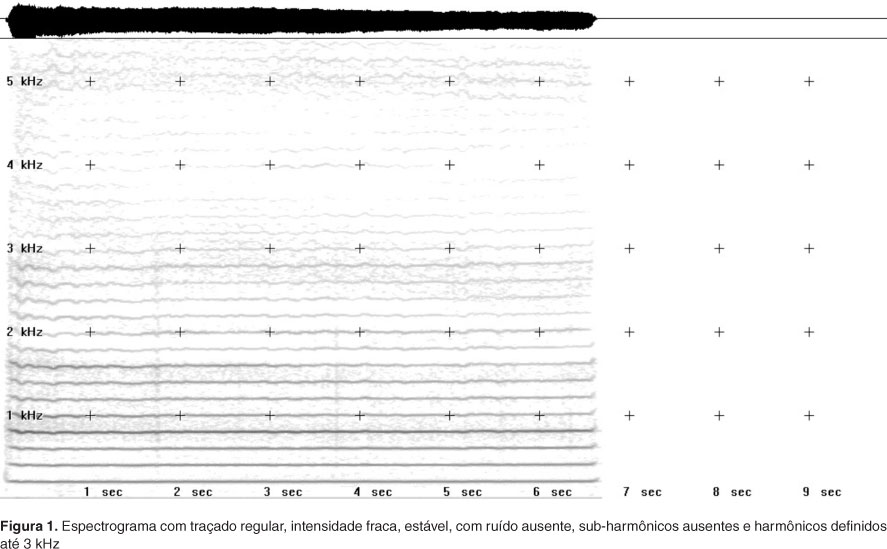Purpose: To verify whether visual training improves the reliability inter and intra-observer of spectrograms interpretation. METHODS: This was a longitudinal experimental study that used spectrograms collected in a database of a private office, regarding the voices of men and women analyzed by the program Gram 5.0 in 60 dB scale, display scroll, palette BW, with frequency analysis performed in linear scale, narrow band, FFT size 1024, and frequency resolution 5.4 Hz. Twenty subjects, Speech-Language Pathology students, evaluated 25 spectrograms, of which five were repeated to evaluate intra-observer reliability, before and after a visual training of spectrograms analysis. The analyzed parameters were: spectrogram regularity, harmonic darkening, spectrogram stability, presence of noise components, harmonics definition and presence of sub-harmonics. The training session lasted four hours. Kappa statistic was used to evaluate intra-observer reliability, and the adjusted Chi-square test, to evaluate inter-observer reliability. RESULTS: Intra-observer reliability of harmonic darkening, spectrogram stability, harmonic definition and presence of sub-harmonics improved, and the other aspects kept almost perfect agreement after the training. Inter-observer reliability of spectrogram stability and presence of sub-harmonics improved, and presence of noise components got worse after training. CONCLUSION: Visual training improved inter and intra-observers reliability in spectrograms interpretation.
Voice; Speech acoustics; Sound spectrography; Observer variation; Training



